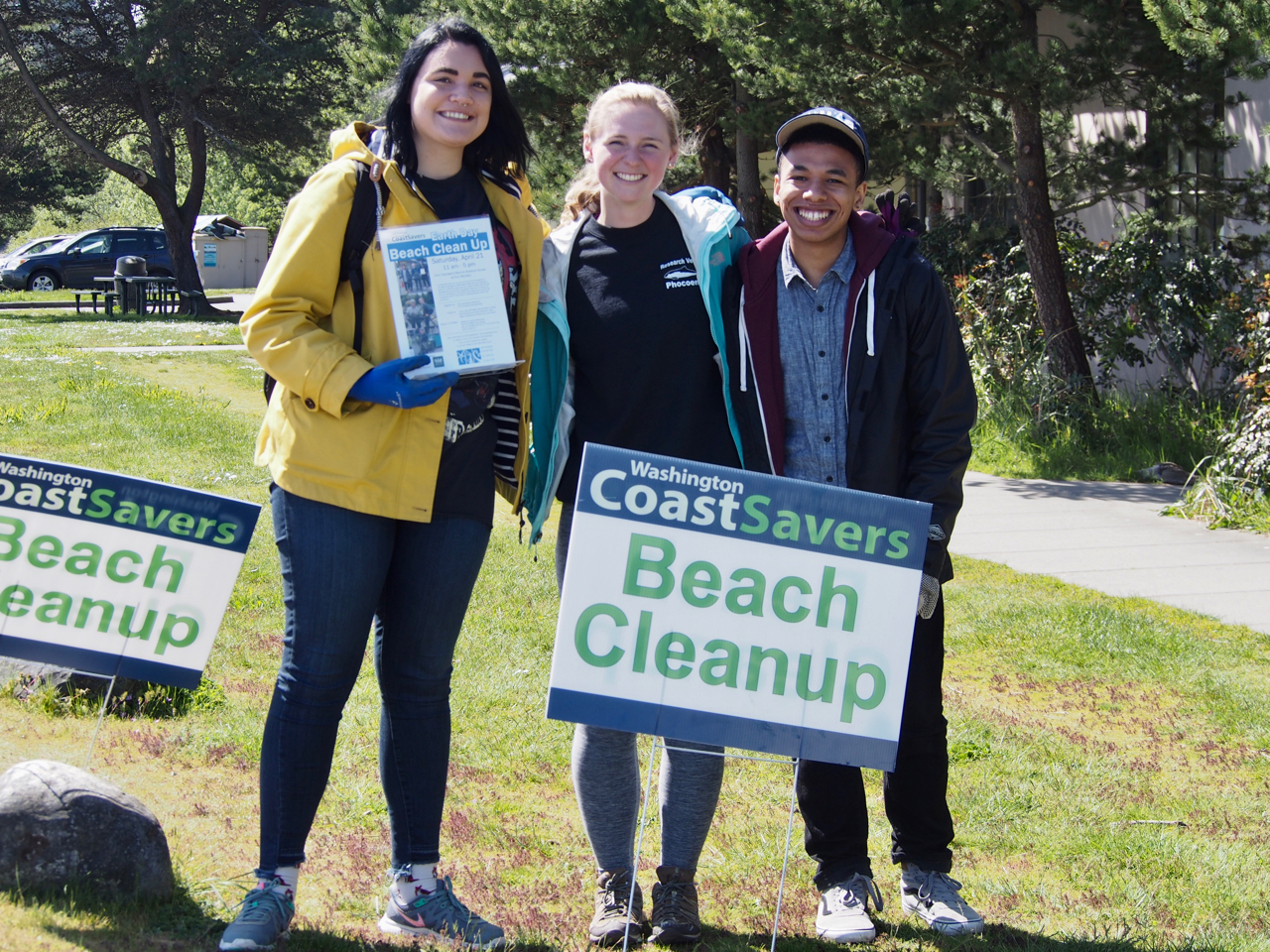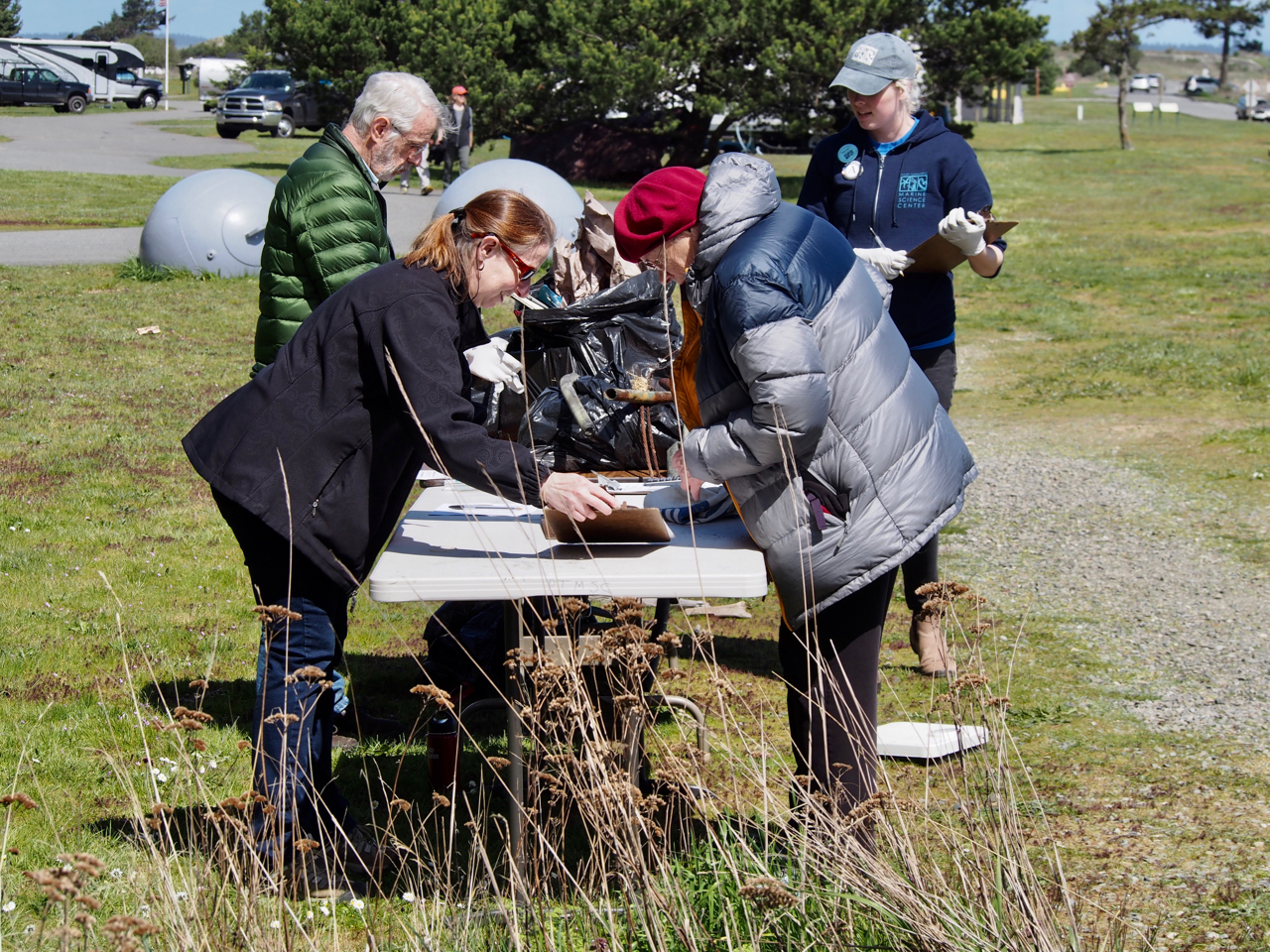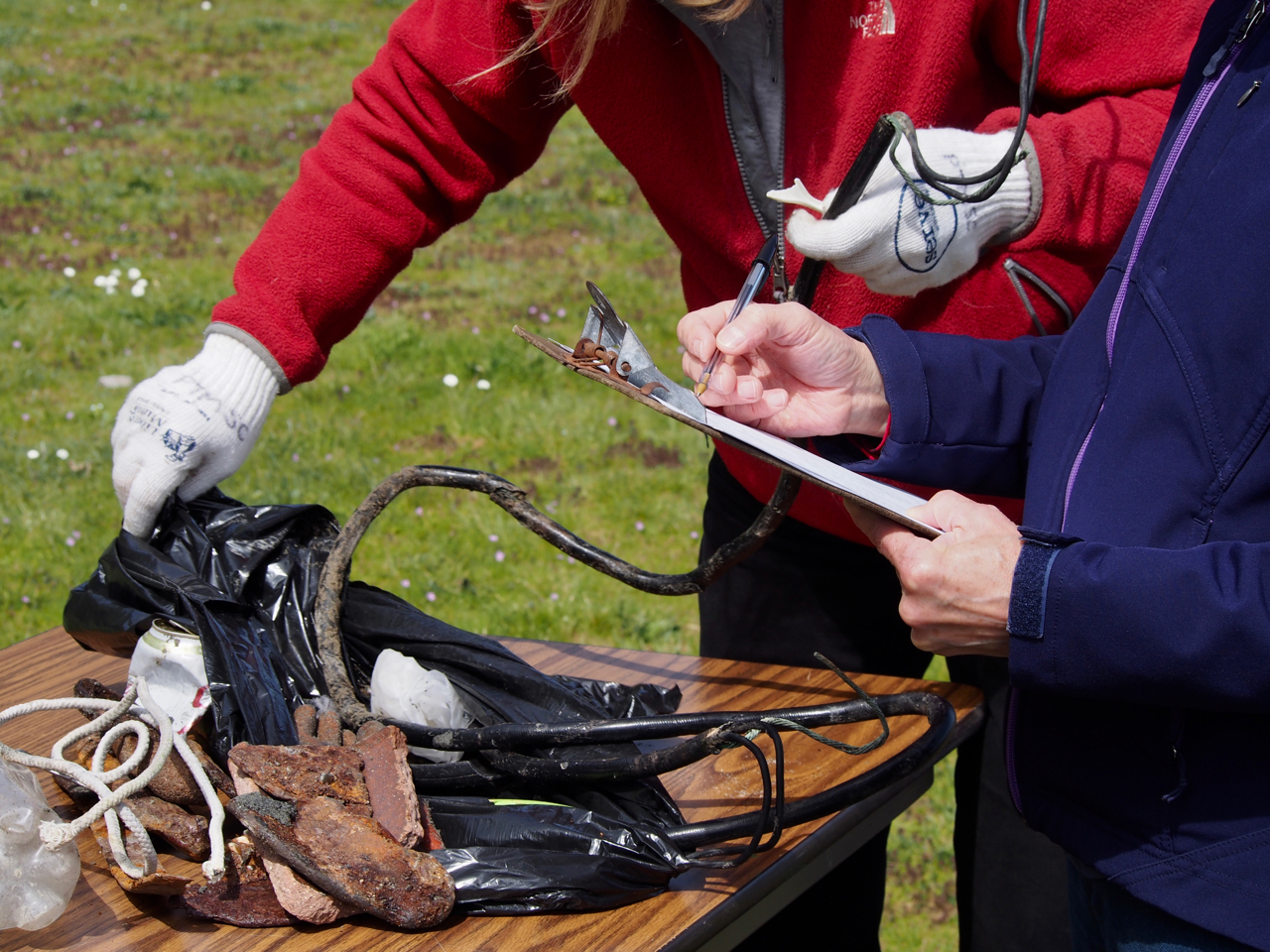The beaches and waterways around Port Townsend look so beautiful and pristine, it is hard to believe they are facing some very serious threats from pollution. Especially in the Salish Sea, a unique binational estuary that is home to some very large metropolitan cities such as Seattle, Vancouver, Victoria, Tacoma, and smaller port towns such a Bellingham, Olympia, and Port Angeles.
The beaches in the Salish Sea are used for recreational, residential, commercial and industrial purposes but they are also home to many unique species.
Marine debris is one form of pollution that can impact human and wildlife health. Marine debris is defined as:
Any persistent solid material that is manufactured or processed and directly or indirectly, intentionally or unintentionally, disposed of or abandoned into the marine environment.
Marine debris may enter directly due to human action, or indirectly when washed out to sea via rivers, streams and storm drains. Marine debris has become one of the most pervasive pollution problems facing the world’s oceans and waterways.*
Some of the most commonly found marine debris items are:

On Earth Day weekend, 2018, the Port Townsend Marine Science Center partnered with Washington CoastSavers and the Port Townsend Food Coop to host a local beach cleanup to remove marine debris from our local beaches.
The day started early with volunteer divers Howard, Tim, and Tusker gearing up and heading out right under the PTMSC pier. They worked together to remove five abandoned crab pots tangled on the pier pilings. These pots were sitting on the bottom and posed a threat to animals living there (see upcoming post by AmeriCorps Emilee on derelict fishing gear).
We had volunteers remove debris from North Beach, Chetzemoka, Downtown Port Townsend, Boat Haven, Fort Worden, Fort Flagler, and a few places in between.




Written by AmeriCorps member Mariah Vane
The beaches in the Salish Sea are used for recreational, residential, commercial and industrial purposes but they are also home to many unique species.
Marine debris is one form of pollution that can impact human and wildlife health. Marine debris is defined as:
Any persistent solid material that is manufactured or processed and directly or indirectly, intentionally or unintentionally, disposed of or abandoned into the marine environment.
Marine debris may enter directly due to human action, or indirectly when washed out to sea via rivers, streams and storm drains. Marine debris has become one of the most pervasive pollution problems facing the world’s oceans and waterways.*
Some of the most commonly found marine debris items are:

| Volunteer diver, Howard. Photo by W. Feltham |
| Volunteer divers, Tusker and Tim. Photo by W. Feltham |
| AmeriCorps member James (and PTMSC Aquarist Ali ) helped pull the pots up onto the pier once they were cut free. Photo by W. Feltham |
| Volunteers stopped by the Natural History Exhibit portico to sign in and get their beach assignments. Photo by W. Feltham |
Thanks so much to all of the PTMSC volunteers who enthusiastically
ran the check-in station, helped sort debris, fill out data cards, and
connect the clean up with the significance of caring for the Salish Sea.
What a great crew! Photo by W. Feltham
|
Beach Clean Up volunteers embark on their beach walk, scanning the ground for man-made debris while also enjoying the beautiful weekend day.
Photo by W. Feltham
|
Over 130 people volunteered their time to clean up Port Townsend’s beaches. Many were locals but we also had participants visiting from Seattle and elsewhere.
| Photos by W. Feltham |
Once volunteers returned with their loot, the debris was weighed and sorted. We threw on gloves and dug into the garbage to document and itemize our findings. We recycled cans and bottles and completed a Washington Coast Savers data sheet so we could track what we were seeing.
| Photos by W. Feltham |
We saw a lot of cigarette butts, straws, bottle lids, shotgun shells, plastic food wrappers, rope bits, and construction debris. All of this debris can be harmful to wildlife and humans.
Plastic is especially dangerous. As it sits in the water, it breaks into smaller and smaller pieces and begins to absorb pollutants in the water, becoming extra concentrated with contaminants. As it degrades, it becomes harder to remove.
Plastic can also begin to take on a fishy smell as it sits and absorbs toxins and collects marine life. It is easily mistaken for prey and ingested by marine animals. Once consumed, this debris can cause illness from toxins or can block digestive pathways causing starvation. Plastic has been found in the bodies of small bait fish (a staple of marine food webs), seabirds, whales, and a plethora of other animals. It has even made its way into shellfish and fish markets for human consumption. Gross huh?
There is an unimaginable amount of marine debris in the world’s oceans and the Salish Sea. Beach clean ups are a great way to remove what washes ashore. But what if we could prevent human debris and plastics from entering our waterways in the first place? One way to do this is to stop supporting the creation of single-use plastic products by:
- supporting reuse
- considering the lifespan of the products we are buying
- seeking out products with little or no packaging
- saying NO to straws
- considering where you are creating waste and try to reduce it
Collectively, during this clean up, we removed 659 lbs of garbage from Port Townsend beaches!
Thank you so much for all of the attention to detail and love you brought with you to clean up our beaches! What a great way to appreciate this amazing ecosystem we all call home!
All photos by PTMSC volunteer (and past PTMSC Board President) Wendy Feltham -- Thank You Wendy!
* U.S. Environmental Protection Agency, “Report to Congress: Impacts and Control of Combined Sewer Overflows and Sanitary Sewer Overflows” August 26, 2004, (EPA Publication 833-R-04-001), http://cfpub.epa.gov/npdes/cso/cpolicy_report2004.cfm













